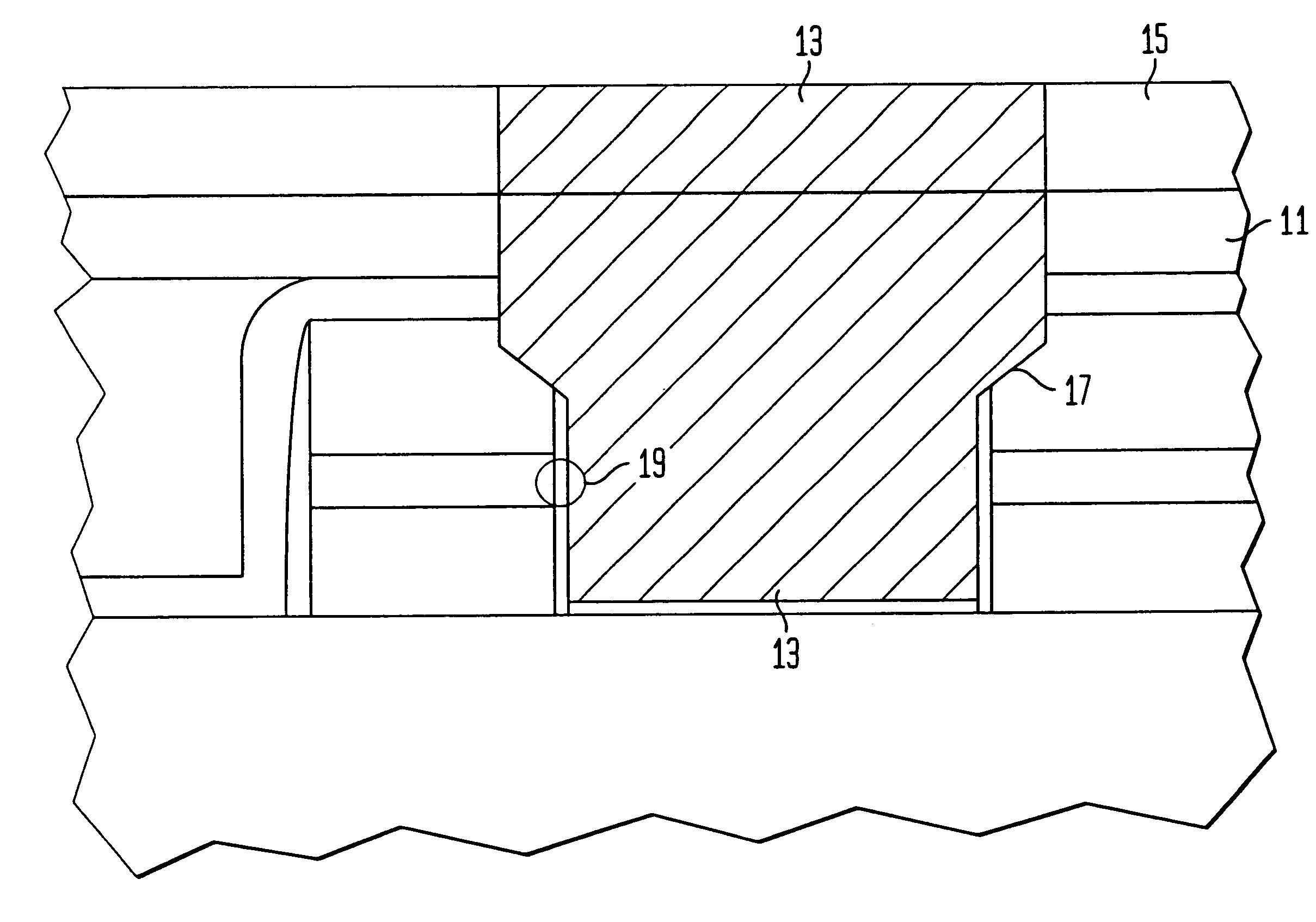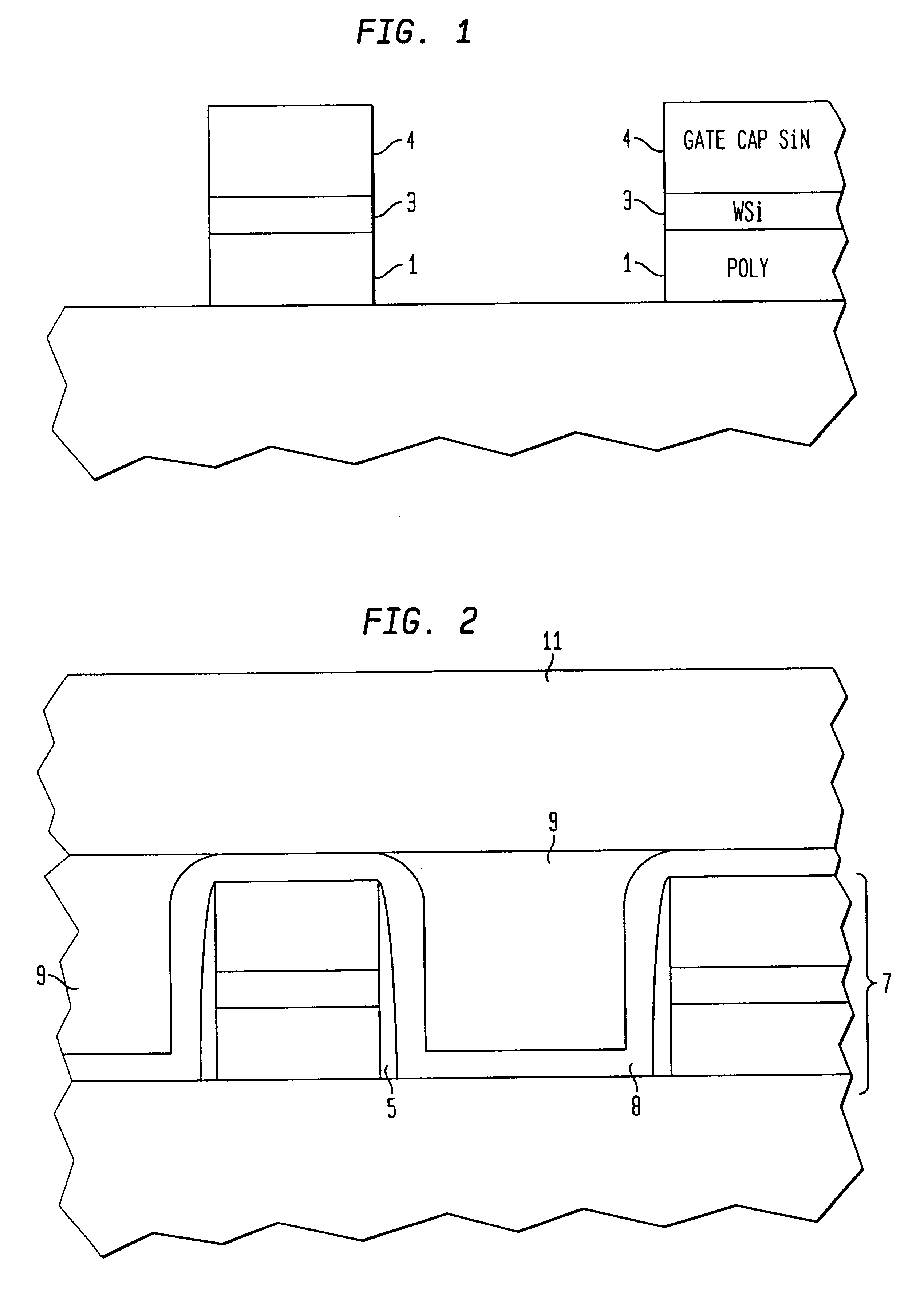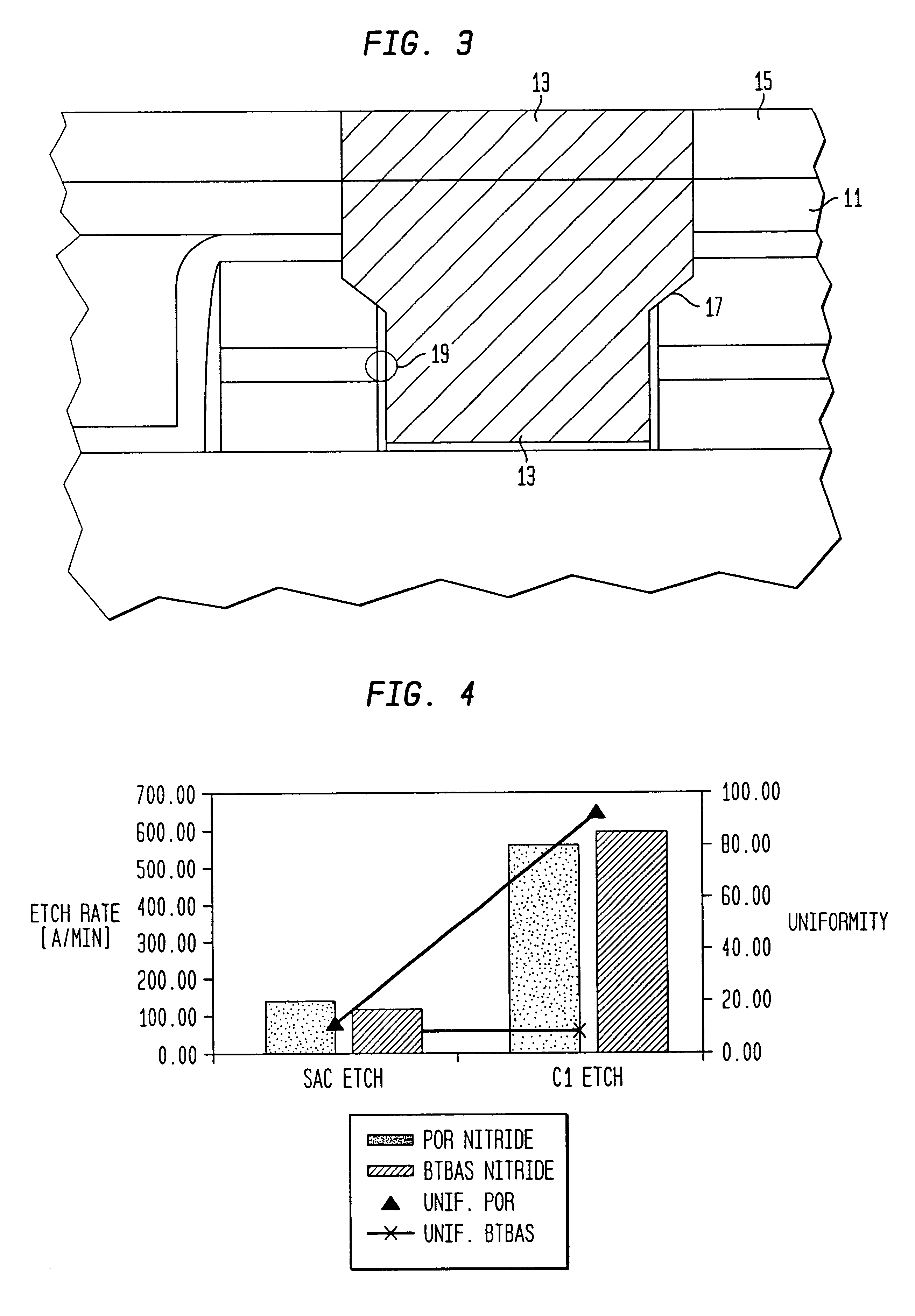Low temperature carbon rich oxy-nitride for improved RIE selectivity
- Summary
- Abstract
- Description
- Claims
- Application Information
AI Technical Summary
Benefits of technology
Problems solved by technology
Method used
Image
Examples
Embodiment Construction
Referring now to the drawings, and more particularly to FIGS. 1-3, which illustrate three stages in the formation of a bit line contact. The first stage is shown in FIG. 1. As can be seen, gate stack deposition comprised of polysilicon layer 1, a tungsten suicide layer 3, and a gate cap silicon nitride 4 is deposited on a portion of a chip. The gate stack is etched to form gates.
FIG. 2 shows the cross section after deposition of spacer nitride, boro phospho silicate glass deposition, chemical mechanical polish, silicon dioxide deposition, and anneal. As can be seen, the spacer nitride 5 is deposited against each gate stack 7. A deposition of silicon oxy nitride 8 covers the exposed surface of the chip as well as the sides and top of the gate stack. Boro phospho silicate glass (BPSG) 9 fills in the depth between and over the gate stacks 7. A chemical mechanical polish smooths the surface of the BPSG 9, followed by a silicon dioxide 11 deposition and anneal.
Formation of carbon contain...
PUM
 Login to View More
Login to View More Abstract
Description
Claims
Application Information
 Login to View More
Login to View More - R&D
- Intellectual Property
- Life Sciences
- Materials
- Tech Scout
- Unparalleled Data Quality
- Higher Quality Content
- 60% Fewer Hallucinations
Browse by: Latest US Patents, China's latest patents, Technical Efficacy Thesaurus, Application Domain, Technology Topic, Popular Technical Reports.
© 2025 PatSnap. All rights reserved.Legal|Privacy policy|Modern Slavery Act Transparency Statement|Sitemap|About US| Contact US: help@patsnap.com



